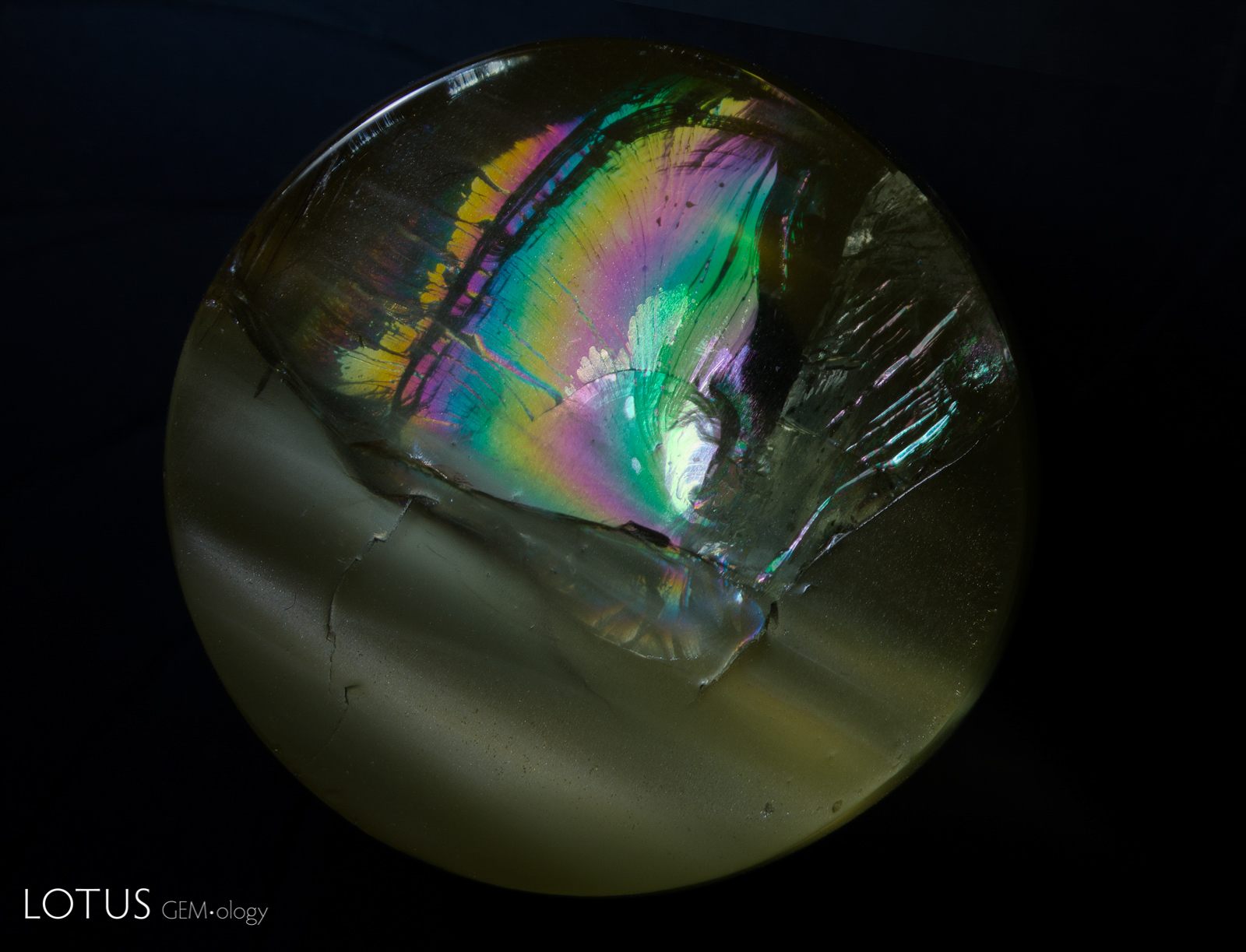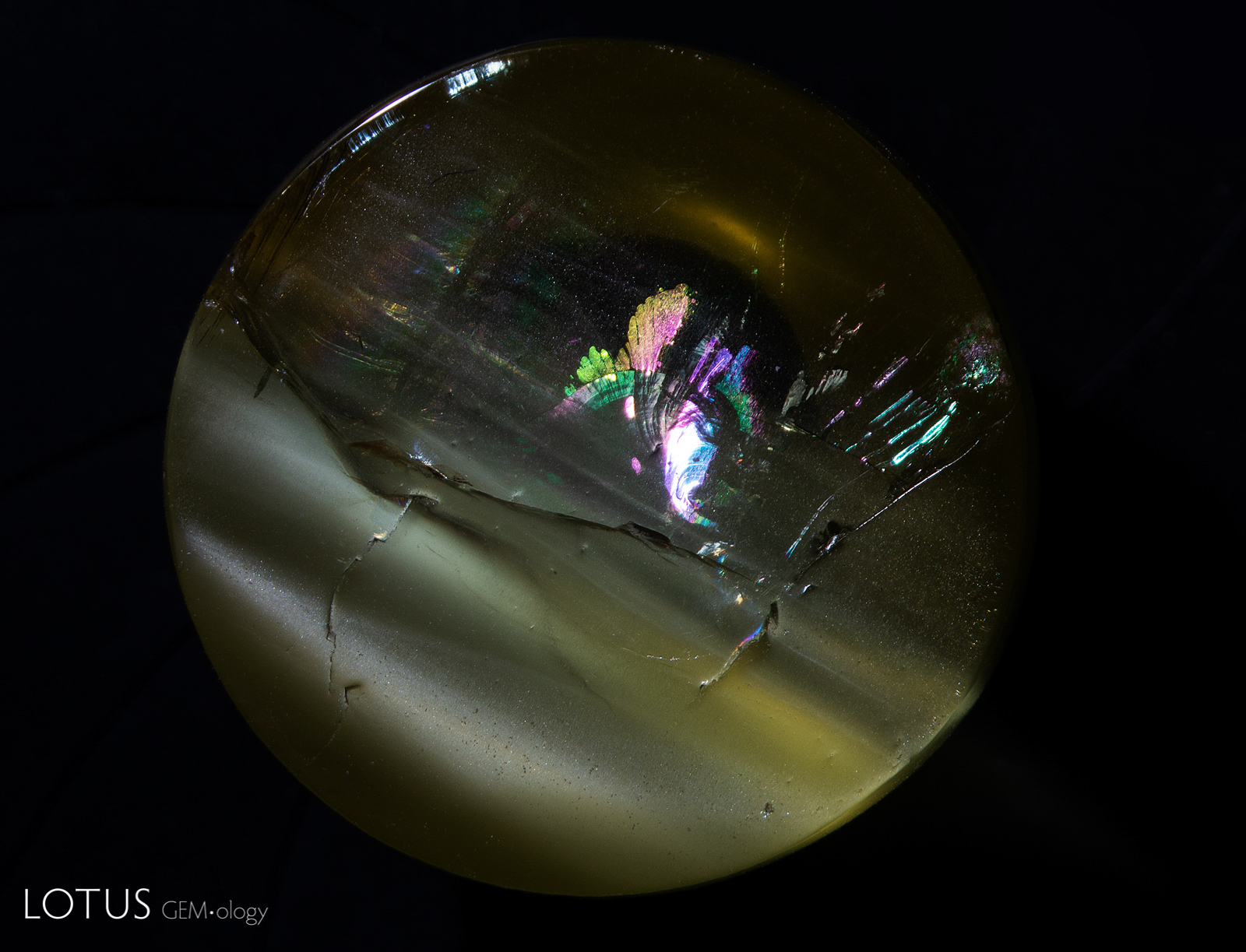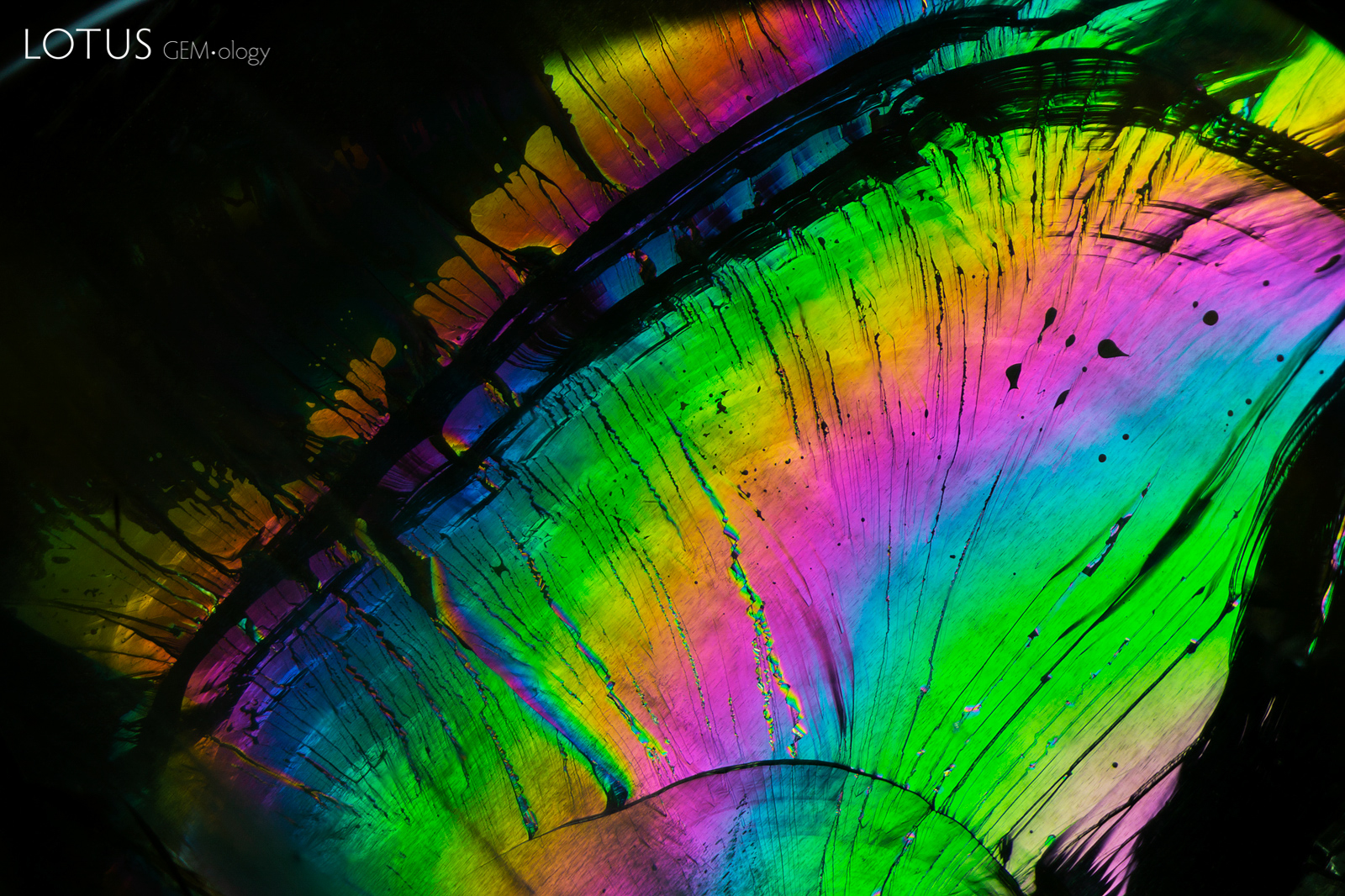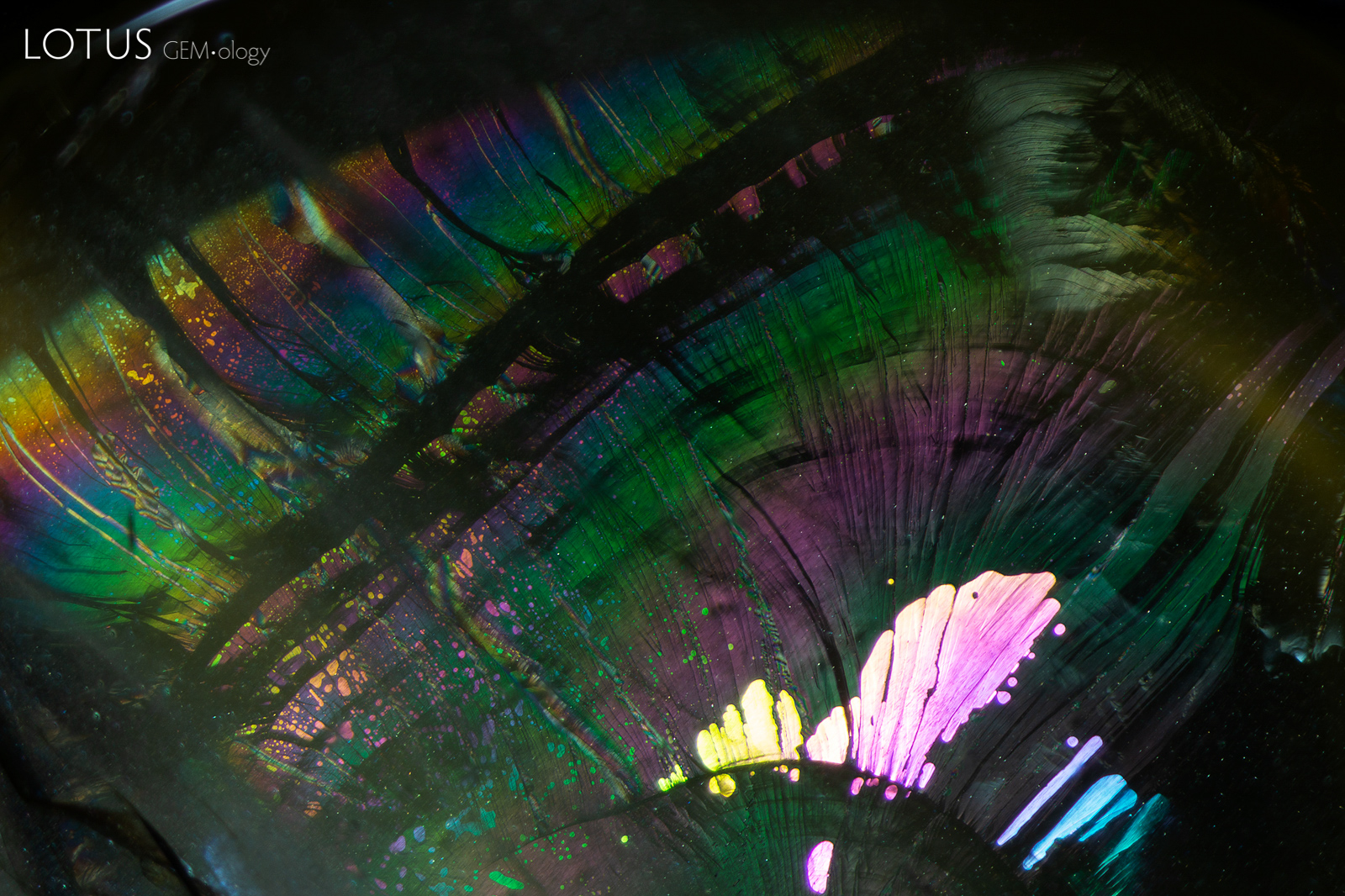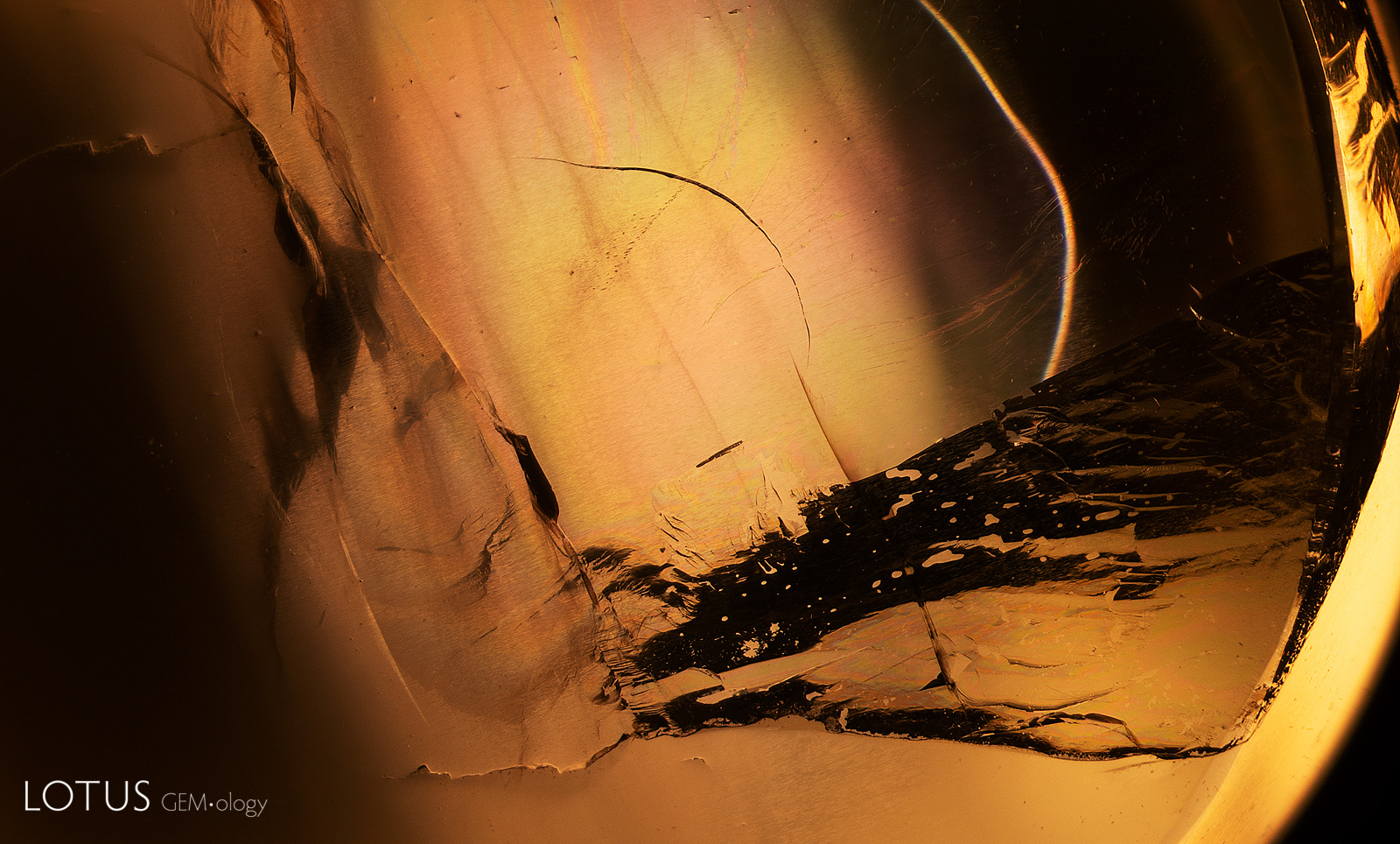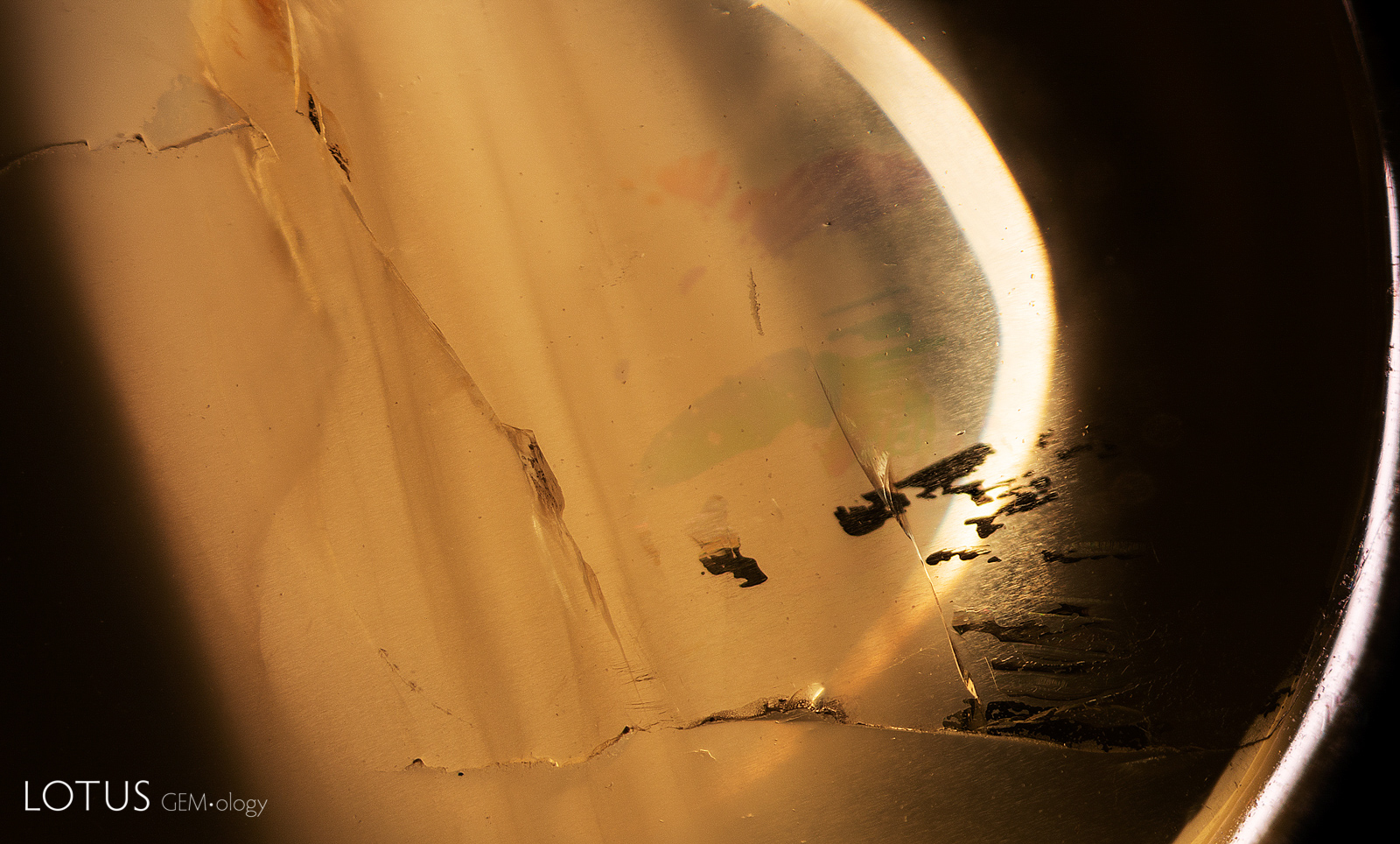Oil treatment has a significant impact on the appearance of an apatite.
Apatite Oiling • Before and After
Fissure filling of gemstones is an age-old treatment that can improve a stone’s clarity (Gems & Gemology, Fall 2020 Gem News International, pp. 443–444). By introducing oil or other fillers such as resin into the stone, the treater can minimize the appearance of fissures.
Recently we had the opportunity to observe this treatment up close in an apatite cabochon brought to our laboratory for photography while it was still untreated. Then the sample was oiled by Jeffery Bergman and returned to the laboratory for observation and photography.
| Figure 1. Left: On the base of this apatite cabochon (15 × 15 × 13 mm), a large, reflective fissure can be observed with fiber-optic illumination. Right: After the oil filling, the same fissure is much less noticeable and the iridescent reflective area is considerably smaller, enhancing the sample’s clarity. Photos by E. Billie Hughes. | |
Upon examination before and after, the effects of the treatment were clear. On the base of the cabochon, a large, reflective fissure became less visible after oiling (Figure 1). Using fiber-optic illumination, it was apparent that the filler had diminished the reflective appearance of the fissure, with only small highly reflective areas remaining (Figure 2). Darkfield illumination also revealed a stark difference in appearance: The filler had rendered large dark areas filled with air nearly invisible (Figure 3).
| Figure 2. A close-up of the fissure before and after oil treatment, shown in diffuse fiber-optic illumination. Left: Before oiling, the fissure is easily visible and highly reflective. Right: After oiling, the reflection is more muted and less noticeable, with only a small highly reflective area remaining. Photomicrographs by E. Billie Hughes; field of view 10 mm. | |
| Figure 3. Left: Before filling, transmitted light shows dark areas where air has become trapped in the fissure, making it more visible. Right: Treatment with oil minimizes the dark areas, enhancing clarity. Photomicrographs by E. Billie Hughes; field of view 27 mm. | |
This microscopic observation serves as a reminder of the significant impact clarity enhancement can have on gems of all types.
About the Author
E. Billie Hughes visited her first gem mine (in Thailand) at age two and by age four had visited three major sapphire localities in Montana. A 2011 graduate of UCLA, she qualified as a Fellow of the Gemmological Association of Great Britain (FGA) in 2013. An award winning photographer and photomicrographer, she has won prizes in the Nikon Small World and Gem-A competitions, among others. Her writing and images have been featured in books, magazines, and online by Forbes, Vogue, National Geographic, and more. In 2019 the Accredited Gemologists Association awarded her their Gemological Research Grant. Billie is a sought-after lecturer and has spoken around the world to groups including Cartier and Van Cleef & Arpels. In 2020 Van Cleef & Arpels’ L’École School of Jewellery Arts staged exhibitions of her photomicrographs in Paris and Hong Kong.
Notes
This article first appeared in Gems & Gemology, Spring 2022, Vol. 58, No.1, pp. 62–63.



